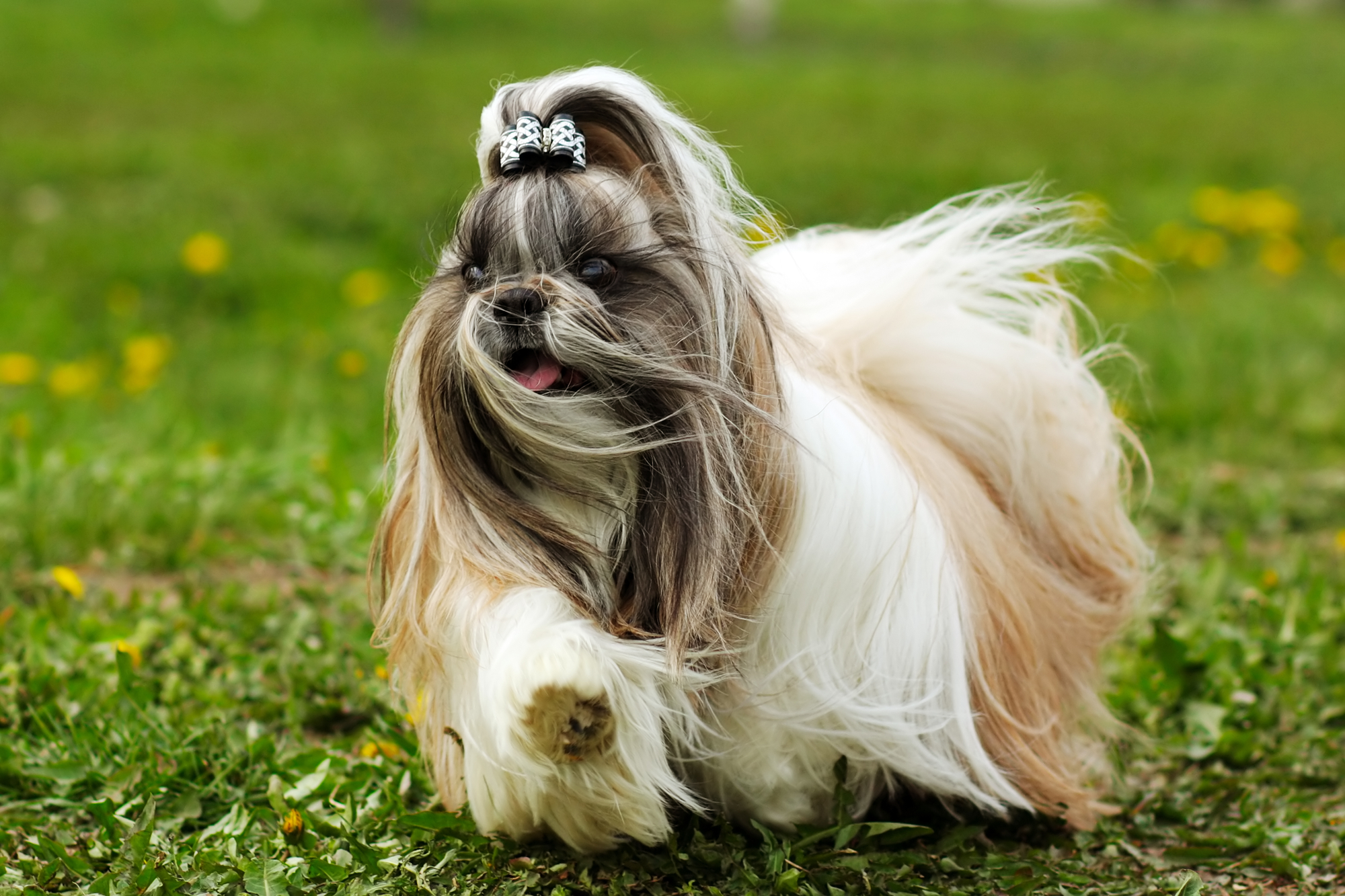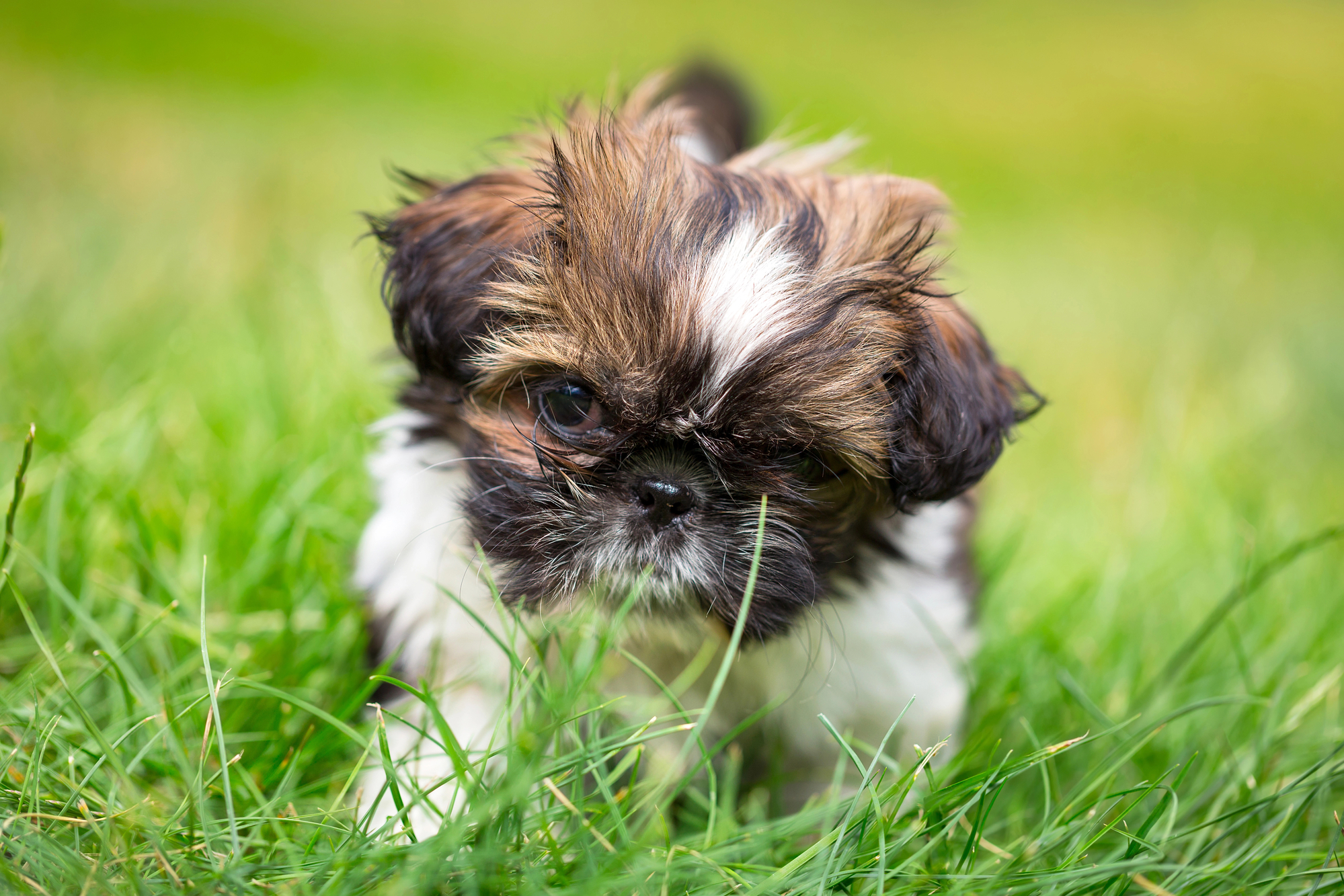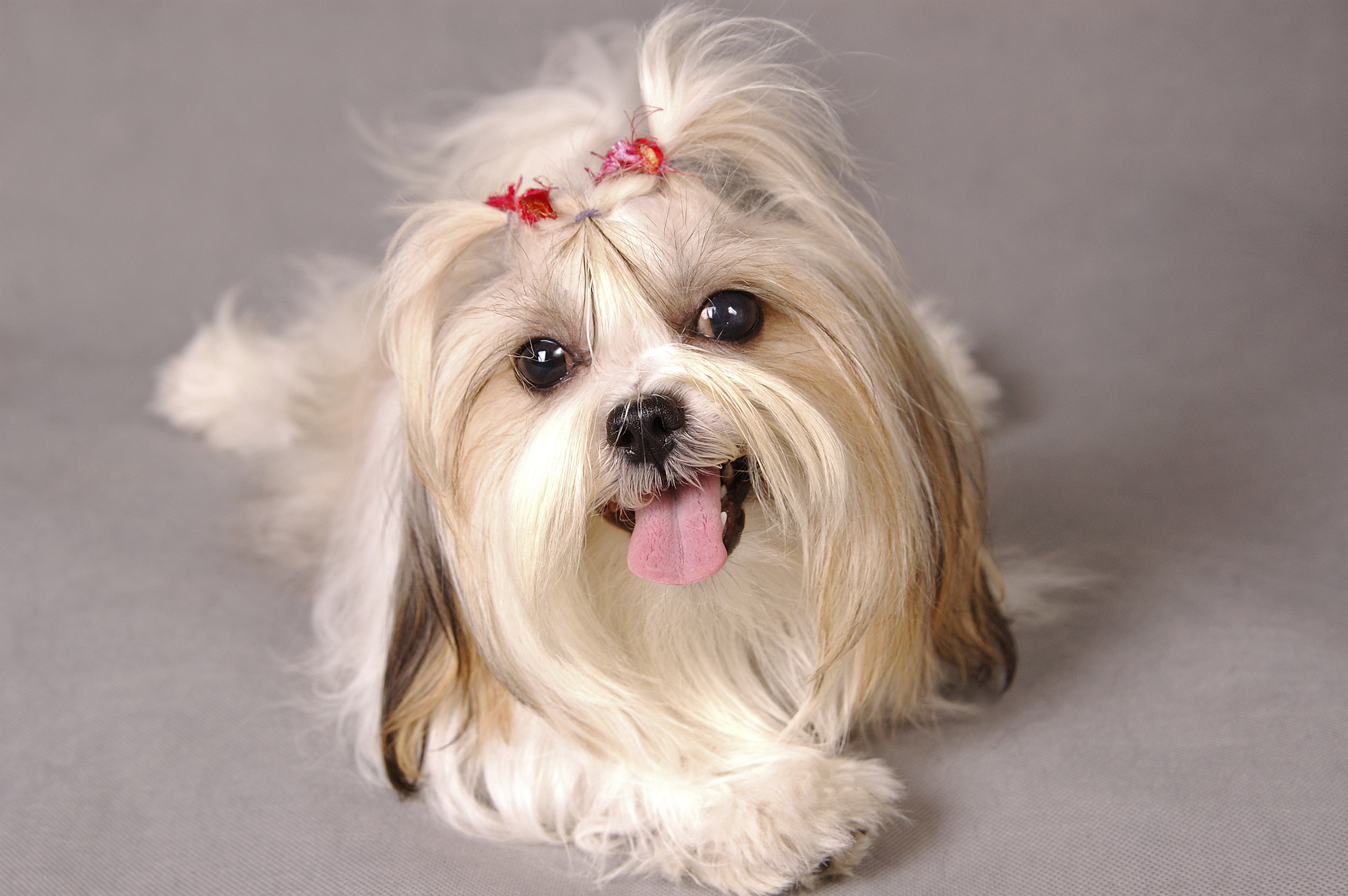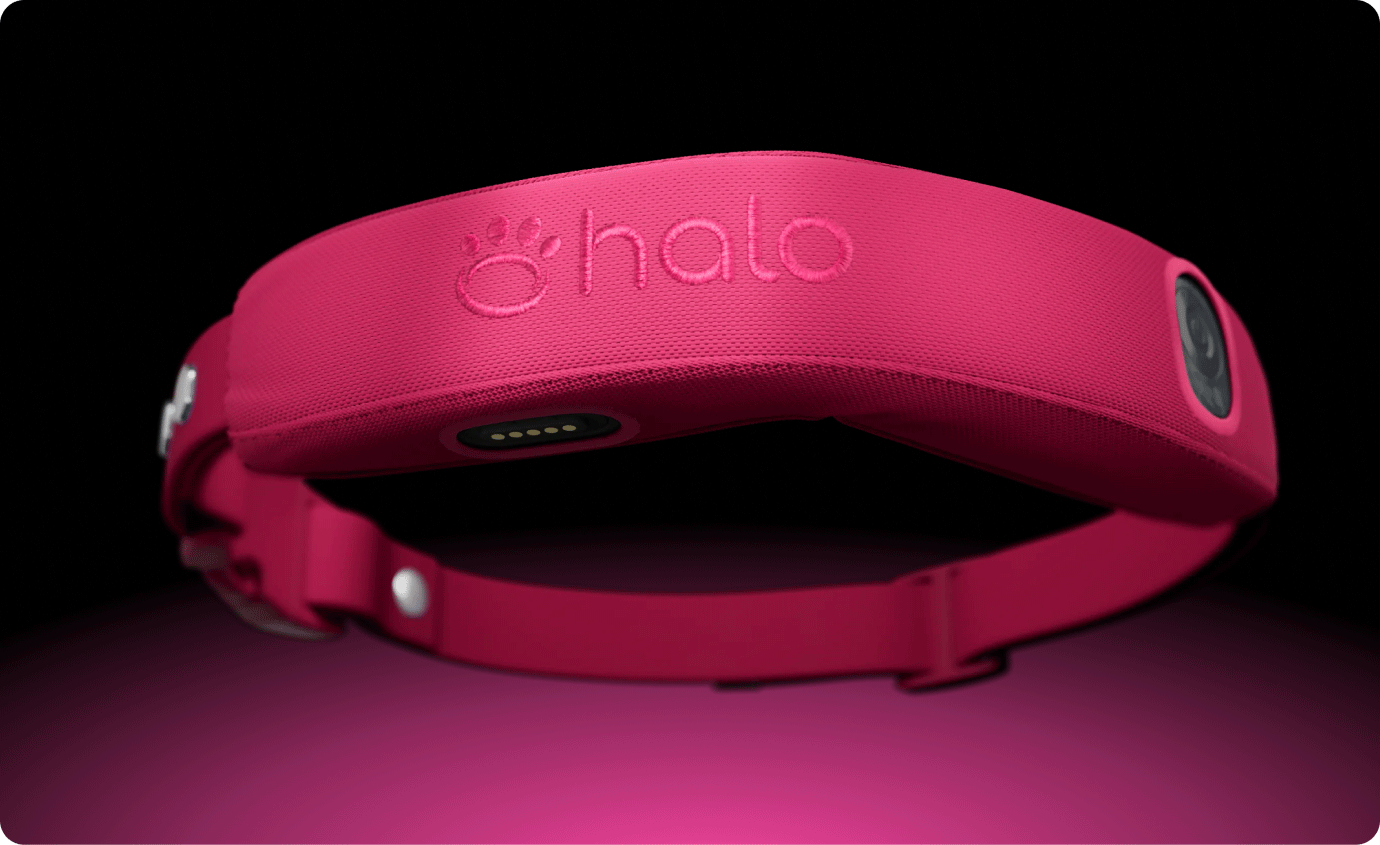Your Cart

Halo is backed by a 90-day satisfaction guarantee
Subtotal$0
Tax & Shipping Calculated at checkout
Total $0
The shih tzu is a small, long-haired dog that adores attention, easily attaches to its family and adapts quickly to new situations. It’s a popular breed among families, especially those with young children, due to its perky, playful temperament.
Even though shih tzus enjoy going for the occasional walk, they primarily prefer lounging around the house with their owners. This isn’t surprising considering they were bred in Tibet in the 7th century and gifted to Chinese emperors, living a life of royalty in palaces. In the 1930s, the shih tzu became more widespread, gaining popularity throughout England and the United States.
Today, shih tzus mostly serve as trustworthy companions and affectionate lapdogs. This guide provides a comprehensive overview of the characteristics, training needs, common health issues, grooming requirements and feeding guidelines for shih tzus. It also explores commonly asked questions to help prospective dog owners decide if a shih tzu aligns with their household.
t’s a popular breed among families, especially those with young children, due to its perky, playful temperament.

Male: Weight: 9-16 lbs; Height: 9-10.5 inches
Female: Weight: 9-16 lbs; Height: 9-10.5 inches
Yes
Yes, but should be socialized early
Excellent family pets
Requires consistent reward-based training but can be stubborn
Regular brushing and bathing; occasional trimming to manage long hair
10-18 years
Affectionate, playful, loyal
Clever, adaptable, moderately energetic, friendly
Black, white, gold, blue, silver, black and white, gold and white, blue and white, silver and white, tricolored
Adjustable; Fits most dogs

Both male and female shih tzus stand between 9 and 10.5 inches tall and weigh roughly 9 to 16 pounds. They have a distinctive look, with long, silky hair, short legs, button eyes and short, flat noses. Because the shih tzu’s double coat can grow long and fall into its eyes, most owners arrange for frequent trims or pin their pup’s hair back.
Shih tzus also come in a variety of colors, including black, white, gold, blue and silver. Many of them are multicolored and have tan or white patches around their eyes and scattered across their backs. They’re identified by fluffy, teacup-handle tails that curve over their backs.
Due to their playful, mischievous nature, shih tzus can be challenging to train. They try charming their owners into letting them do what they want and may forget prior training without consistent reinforcement. However, shih tzus are also very clever, pick up commands quickly through reward-based training and enjoy learning new tricks and games. Like most dog breeds, they benefit greatly from early training and socialization.
A GPS dog fence can be a treat tool for dogs like a shih tzu. Monitored by an app on your phone, you can ensure that your dog doesn’t decide to roam while playing outside, at the park or while visiting friends.
During the first 6 months with your shih tzu, focus on teaching basic commands, socializing and baby-proofing your house to prevent your pup from eating or chewing on something it shouldn’t. Shih tzus teethe as puppies and will chomp on anything they can get their paws on.
Teach one command at a time and use basic words, such as “sit,” “stay” or “down.” Your shih tzu may misbehave during training and try convincing you to give it a pet or treat without performing a trick. If this happens, ignore your pup until it stops and repeat the command. Offer treats or praise to reinforce desirable behavior, but never use harsh correction. Shih tzus scare easily and won’t respond well to this.
Because shih tzus are naturally skittish, socializing them early helps them better adjust to other dogs or animals. During an introduction to another pet, ensure your shih tzu is in a controlled environment, and use a leash while in public to prevent it from running away or hiding.
Shih tzus respond well to reward-based methods, which come in handy during leash and house training. Their stubborn personalities can make obedience training a frustrating experience, but being patient and consistent pays off.
One way to familiarize your shih tzu with wearing a harness and leash is to put the devices on while it’s relaxing in the house. Offer a treat if your pup lets you put them on without any issues. Although shih tzus are small and relatively easy to manage, they may tug, bite or pull on the leash, making it difficult to navigate walks. If this happens, hold a treat in your hand to get your dog’s attention, and only relinquish it when your pup behaves.
Follow a similar method when house training. Bring your shih tzu outside every 2 to 3 hours, and bring along a treat to offer after it successfully does its business.
Shih tzus aren’t known for jumping hurdles due to their short, stubby legs. However, they can be trained to weave through poles, climb through tunnels or jump over short obstacles. Teach one skill at a time using positive reinforcement techniques, and stick to short training sessions lasting no more than 5 to 10 minutes. Learning how to master these advanced tricks helps your shih tzu enhance its problem-solving skills, boosting its confidence and self-esteem.
Shih tzus require regular grooming to keep their long, soft coats in pristine shape. Although they rarely shed, their hair can easily mat and tangle if it isn’t routinely brushed or washed. Following a consistent grooming schedule is key to maintaining your pup’s health and hygiene.
Additionally, clean your shih tzu’s ears weekly, and trim its nails every 3 to 4 works, depending on its activity level. You may also need to wash your pup’s face daily, as food often sticks to a shih tzu’s mustache or underneath its mouth, especially with long hair.
Many shih tzu owners prefer keeping their pup’s hair long in a top-knot cut, allowing them to style the hair with colorful ribbons or clips. Some owners opt for a teddy bear cut, which involves sculpting the hair around the face, ears, legs and body into a stuffed animal-like appearance. Others trim their shih tzu’s body hair short but keep the face longer to resemble a miniature lion. This style likely comes from the Mandarin translation of shih tzu, which means little lion.
Shih tzus are generally healthy, but they do have an elevated risk of certain health issues, including:
Shih tzus are also prone to heart disease, kidney stones and Willebrand’s disease, a blood clotting disorder. However, scheduling regular vet checkups can detect health conditions early, enabling proper treatment.

Shih tzus have sensitive stomachs and can be picky eaters, but high-quality dog food with fresh ingredients should do the trick. Choose a dry kibble that contains the following nutritional elements:
A balanced diet keeps up with your shih tzu’s rapid metabolism and ensures it consumes the nutrients it needs to foster growth and maintain weight. However, avoid foods containing fillers, meat byproducts, artificial additives and high wheat or gluten content. These can cause digestive issues, food intolerance, skin problems and other long-term health conditions.
As a puppy, your shih tzu should eat approximately 1 to 2 ounces across four to six daily meals. Feed an adult shih tzu roughly 2 to 3.4 ounces across three daily meals. Because of their fast metabolism, Shih tzus benefit from multiple smaller meals to maintain their energy levels. Toss your pup a healthy snack in between meals if needed.
Adult shih tzus need about 30 minutes to 1 hour of daily exercise, ideally split across multiple walks or playtime sessions. While shih tzus have low exercise needs compared to other breeds, they still require a combination of physical and mental stimulation to encourage proper growth and maintain their energy levels.
Accommodate your shih tzu’s physical exercise needs with short walks and indoor play sessions. Shih tzus aren’t equipped for strenuous hikes, but they serve as perfect companions for a quick trek around the block or down a paved walking path at a local park. Integrate short walks into your pup’s daily bathroom breaks, or play a gentle game of fetch with a ball or plush toy in your living room during downtime.
Mental stimulation improves brain development in puppies and helps boost confidence and cognitive functions in adult shih tzus. Additionally, distracting your dog with mentally stimulating activities tires it out and eliminates destructive behaviors, including barking or chewing furniture. Invest in an interactive puzzle toy that contains compartments for hiding treats. This teaches your shih tzu problem-solving skills and keeps it occupied for an extended time.
Hide-and-seek is another effective problem-solving activity. Have your shih tzu sit or stay in a designated area while you hide and let it try to find you. You can also hide treats under objects throughout the house to improve their scent work skills. These activities are ideal on rainy days when walks aren’t possible or to keep your pup entertained while you’re busy with work or household tasks.
Miniature or teacup shih tzus resemble standard shih tzus in color and build but are smaller in size. They stand roughly 6 to 9 inches tall and weigh about 4 to 7 pounds. Despite their compact size, teacup shih tzus possess big, lovable personalities. They’re incredibly playful, affectionate and sociable, making them ideal pets for people of all ages, including families with small children or other pets.
Additionally, they have similar grooming, nutritional and exercise needs to those of standard shih tzus. However, avoid intense physical activities, like hiking, swimming or going for long runs. This can strain their small bodies, resulting in injuries or other health issues.

Due to their small size and affectionate demeanor, shih tzus are ideal for first-time dog owners, families and individuals living in apartments or small houses. They trust easily and enjoy cuddling with their owners. However, they can be stubborn and difficult to house train and aren’t afraid to let you know when they don’t like something. Consider the following factors if you’re interested in adding a shih tzu to your household.
Shih tzus are naturally happy, friendly and less demanding than most other toy dog breeds. They’re loyal to their families, love affection and are highly clever. If you’re seeking a dog that’ll cuddle with your children and leave the house cat alone, a shih tzu is the perfect choice.
However, they can also be mildly stubborn, particularly when it comes to obedience and house training. Additionally, shih tzus bark frequently at loud noises or passing strangers, chew furniture and playfully nip. Proper training can alleviate these concerns, but shih tzus often need consistent reinforcement through rewards-based training, even as adults.
Due to their royal origins of living in palaces, shih tzus are the ultimate homebodies and content spending their days napping on the couch. This may be ideal if you work long hours or leave the house often. You won’t have to worry about dedicating large chunks of time to exercising your dog.
However, providing mental stimulation is still important, and your shih tzu should have access to interactive toys in the house. Additionally, it doesn’t make a good hiking or running companion due to its small build and stubby legs.
Despite having long, silky hair, shih tzus shed less than other breeds and usually only when they’re being brushed or bathed. This makes them a good fit for people with allergies, but they do require regular grooming to maintain their coat and health, including daily brushing, weekly ear cleaning and monthly bathing and nail trimming.
However, grooming serves as the only high-maintenance aspect of owning a shih tzu. If you’re up to the task, a shih tzu makes a great starter dog.
A shih tzu is a great addition to any family, including one with children. Its playful, affectionate demeanor makes it an ideal companion for all ages, but it may shy away from rough play or loud noises.
Adult shih tzus need between 30 minutes and 1 hour of daily exercise. This can be broken up into two to three short walks or play sessions scheduled throughout the day. However, avoid intense physical activities, such as hiking or going for long runs. Additionally, shih tzus don’t do well in the heat and need more frequent breaks during warmer weather. You can monitor how much activity your dog is getting with a GPS dog collar that lets them play freely within a certain perimeter, and lets you know how much exercise they are getting.
Shih tzus should be brushed regularly, bathed at least once monthly and trimmed every 4 to 6 weeks. Factors such as weather and how quickly your pup’s hair grows can influence grooming requirements. Additionally, this breed requires routine nail trimming and oral hygiene maintenance.
Shih tzus are highly trainable and love learning new skills and games. However, they can be stubborn and believe that training is beneath them. They respond best to consistent reward-based training methods.
Shih tzus are at an increased risk for certain health issues, including:
Scheduling regular vet checkups can help detect conditions early and access necessary treatment.
Shih tzus generally live between 10 and 18 years, depending on their health and lifestyle.
Shih tzus typically get along with other pets, including dogs and cats. Being around other animals can help reduce boredom and may resolve separation anxiety issues if you’re away from home often. Socialize your shih tzu early to prevent shyness and conflict with other animals.
Shih tzus adapt quickly to most home environments, including spacious houses and small apartments. They enjoy being around people of all ages and don’t need too much space to run around and play in. However, shih tzus thrive in moderate climates and don’t respond well to hot weather due to their heavy coat.
Shih tzus are suitable for first-time dog owners and make ideal starter pets due to their friendly demeanor and minimal exercise needs. Overall, shih tzus are relatively low-maintenance. However, they do require frequent grooming and consistent training, which may turn away some prospective owners.
Feed your shih tzu high-quality dog food containing whole meats, healthy fats, digestible carbohydrates and natural ingredients and preservatives. These nutritional elements help build lean muscle, maintain weight and accommodate your pup’s fast metabolism. Consult your veterinarian for specific food recommendations.

Shih Tzus aren’t the most active dogs, but they pack a lot of energy into a small package, especially in their younger years. If you are looking for a convenient way to track your dog’s activity levels while supporting training and keeping them inside a safe perimeter, invest in Halo Collar. Halo Collar is a wireless GPS fence with a convenient phone app that allows you to set up a perimeter for your pet at home, on walks, or nearly anywhere you go. Shop for your Halo Collar today.

Halo is backed by a 90-day satisfaction guarantee
Subtotal$0
Tax & Shipping Calculated at checkout
Total $0